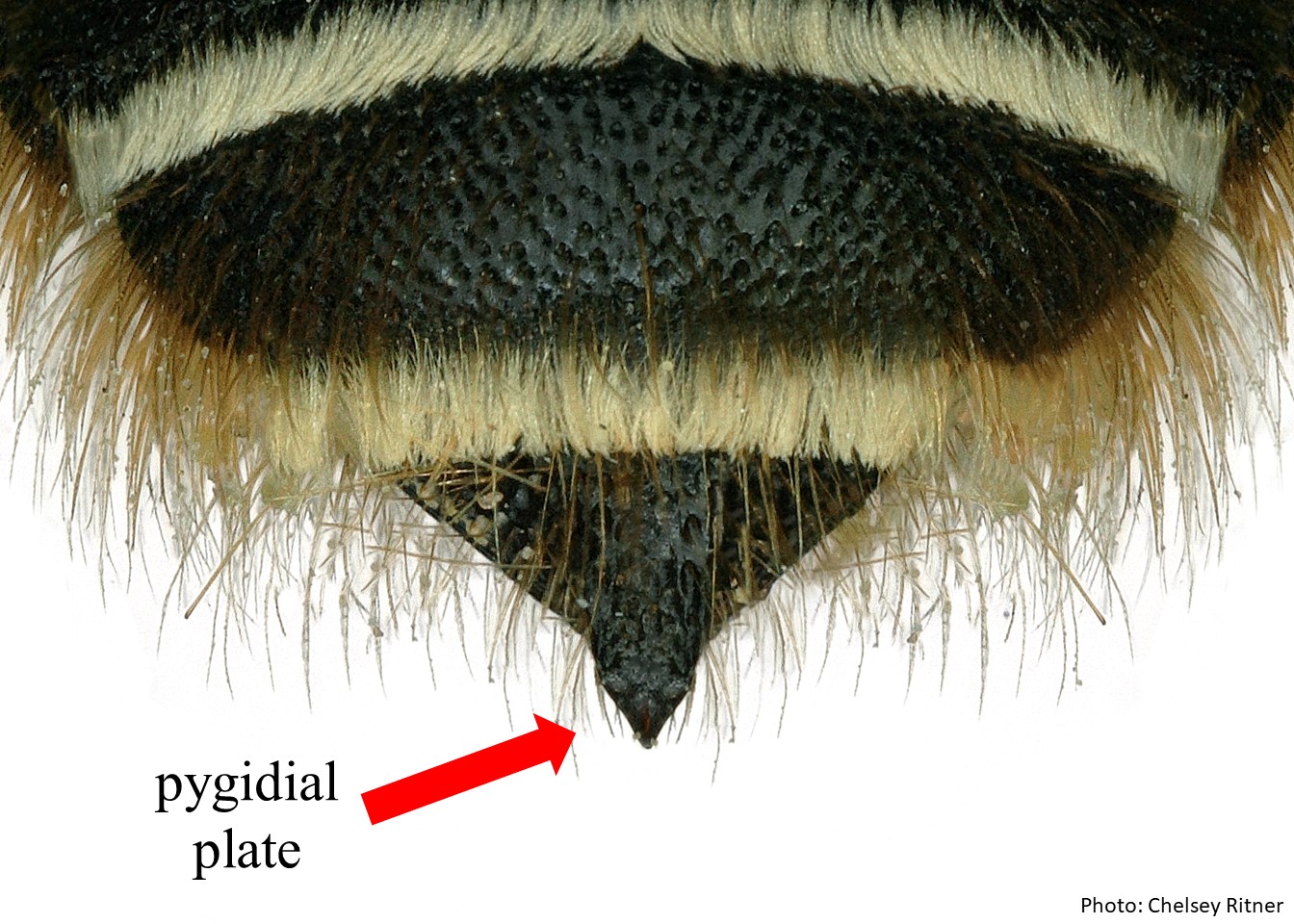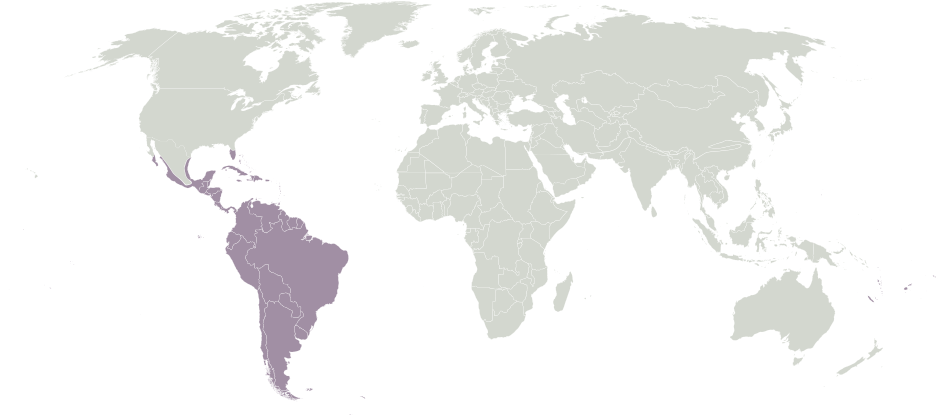Xylocopa (Monoxylocopa) are somewhat robust, small bees, 10 – 17 mm in length, with black to brown integumentintegument:
a tough, protective outer layer
without metallic reflections. Females have moderately dense, mostly brown or black, pubescencepubescence:
short, fine hair
throughout their body and sometimes pale yellow pubescencepubescence:
short, fine hair
on the face. Male have yellow maculations on their head and their pubescencepubescence:
short, fine hair
ranges from light brown to yellow. Their wings range from brown to light brown and have a faint blue or yellowish iridescence (Hurd and Moure 1963Hurd and Moure 1963:
Hurd, P.D. and J.S. Moure. 1963. A Classification of the Large Carpenter Bees (Xylocopine) (Hymenoptera: Apoidea). University of California Publications in Entomology (Vol. 29). Berkeley and Los Angeles: University of California Press, 365 pp., Zanella and Silva 2010Zanella and Silva 2010:
Zanella, F. C. V., M. Silva. 2010. Uma nova espeacute;cie de Xylocopa ( Monoxylocopa ) Hurd amp; Moure e novos registros de X. abbreviata Hurd amp; Moure (Hymenoptera: Apidae). Neotropical Entomology 39(1): 61-66.).
Xylocopa (Monoxylocopa) contains two species: Xylocopa abbreviate and Xylocopa macambirae (Zanella and Silva 2010Zanella and Silva 2010:
Zanella, F. C. V., M. Silva. 2010. Uma nova espeacute;cie de Xylocopa ( Monoxylocopa ) Hurd amp; Moure e novos registros de X. abbreviata Hurd amp; Moure (Hymenoptera: Apidae). Neotropical Entomology 39(1): 61-66.).
Xylocopa (Monoxylocopa) is known from central to northeast Brazil (Zanella and Silva 2010Zanella and Silva 2010:
Zanella, F. C. V., M. Silva. 2010. Uma nova espeacute;cie de Xylocopa ( Monoxylocopa ) Hurd amp; Moure e novos registros de X. abbreviata Hurd amp; Moure (Hymenoptera: Apidae). Neotropical Entomology 39(1): 61-66.).

Distribution map generated by <a data-cke-saved-href="https://www.discoverlife.org/mp/20m?w=1200&kind=Xylocopa+abbreviata" href="https://www.discoverlife.org/mp/20m?w=1200&kind=Xylocopa+abbreviata" _blank"="">Discover Life -- click on map for details, credits, and terms of use.
The flower preferences of Xylocopa (Monoxylocopa) for food are unknown but they have been observed nesting in Encholirium spectabile (Bromeliaceae) flower stalks (Ramalho et al. 2004Ramalho et al. 2004:
Ramalho, M., M. A. Batista, and M. Silva. 2004. Xylocopa ( Monoxylocopa ) abbreviata Hurd amp; Moure (Hymenoptera: Apidae) e Encholirium spectabile (Bromeliaceae): Uma Associaccedil;atilde;o Estreita no Semi-Aacute;rido do Brasil Tropical. Neotropical Entomology 33(4):417-425.).
(modified from Hurd and Moure 1963Hurd and Moure 1963:
Hurd, P.D. and J.S. Moure. 1963. A Classification of the Large Carpenter Bees (Xylocopine) (Hymenoptera: Apoidea). University of California Publications in Entomology (Vol. 29). Berkeley and Los Angeles: University of California Press, 365 pp. and Zanella and Silva 2010Zanella and Silva 2010:
Zanella, F. C. V., M. Silva. 2010. Uma nova espeacute;cie de Xylocopa ( Monoxylocopa ) Hurd amp; Moure e novos registros de X. abbreviata Hurd amp; Moure (Hymenoptera: Apidae). Neotropical Entomology 39(1): 61-66.)
 – T6T6:
– T6T6: without graduligraduli:
without graduligraduli: with subapicalsubapical:
with subapicalsubapical:Xylocopa (Monoxylocopa) females are most similar to X. (Diaxylocopa) and X. (Schoenherria). Females can be distinguished from X. (Diaxylocopa) by their bidentatebidentate:
having two teeth
mandibles. Males and females can be distinguished from X. (Schoenherria) by their non-metallic integumentintegument:
a tough, protective outer layer
and longer parapsidal lines. Males of X. (Diaxylocopa) are unknown. (Hurd and Moure 1963Hurd and Moure 1963:
Hurd, P.D. and J.S. Moure. 1963. A Classification of the Large Carpenter Bees (Xylocopine) (Hymenoptera: Apoidea). University of California Publications in Entomology (Vol. 29). Berkeley and Los Angeles: University of California Press, 365 pp.).
Females bore into the flower stalks Encholirium spectabile (Bromeliaceae) to make their nests. They dig a singular, linear nest in the soft pulp of the bromeliad’s flower stalk (Ramalho et al. 2004Ramalho et al. 2004:
Ramalho, M., M. A. Batista, and M. Silva. 2004. Xylocopa ( Monoxylocopa ) abbreviata Hurd amp; Moure (Hymenoptera: Apidae) e Encholirium spectabile (Bromeliaceae): Uma Associaccedil;atilde;o Estreita no Semi-Aacute;rido do Brasil Tropical. Neotropical Entomology 33(4):417-425.).
There are no known invasives.
Hurd, P.D. and J.S. Moure. 1963. A Classification of the Large Carpenter Bees (Xylocopine) (Hymenoptera: Apoidea). University of California Publications in Entomology (Vol. 29). Berkeley and Los Angeles: University of California Press, 365 pp.
Keasar, T. 2010. Large Carpenter Bees as Agricultural Pollinators. Psyche doi:10.1155/2010/927463.
Ramalho, M., M. A. Batista, and M. Silva. 2004. Xylocopa (Monoxylocopa) abbreviata Hurd & Moure (Hymenoptera: Apidae) e Encholirium spectabile (Bromeliaceae): Uma Associação Estreita no Semi-Árido do Brasil Tropical. NeotropicalNeotropical:
biogeographic region that includes South and Central America, the Caribbean Islands, southern Florida, and the southern Mexican lowlands Entomology 33(4):417-425.
Entomology 33(4):417-425.
Zanella, F. C. V., M. Silva. 2010. Uma nova espécie de Xylocopa (Monoxylocopa) Hurd & Moure e novos registros de X. abbreviata Hurd & Moure (Hymenoptera: Apidae). NeotropicalNeotropical:
biogeographic region that includes South and Central America, the Caribbean Islands, southern Florida, and the southern Mexican lowlands Entomology 39(1): 61-66.
Entomology 39(1): 61-66.